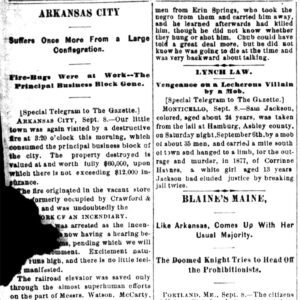Entry Category: European Exploration to Early Statehood - Starting with A
aka: Act to Remove the Free Negroes and Mulattos from the State
Alph (Lynching of)
Appeal of the Arkansas Exiles to Christians throughout the World
 Ashley County Lynching Article
Ashley County Lynching Article




